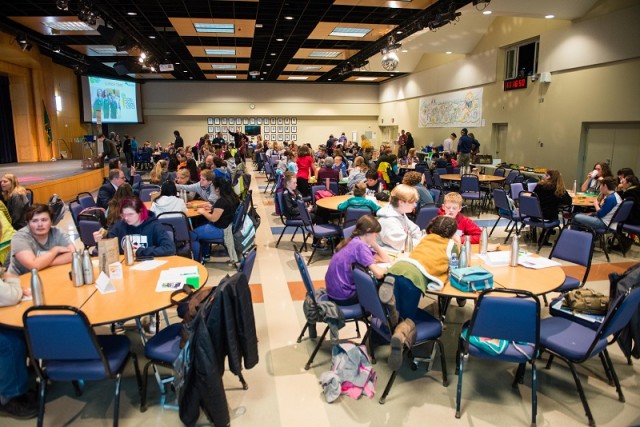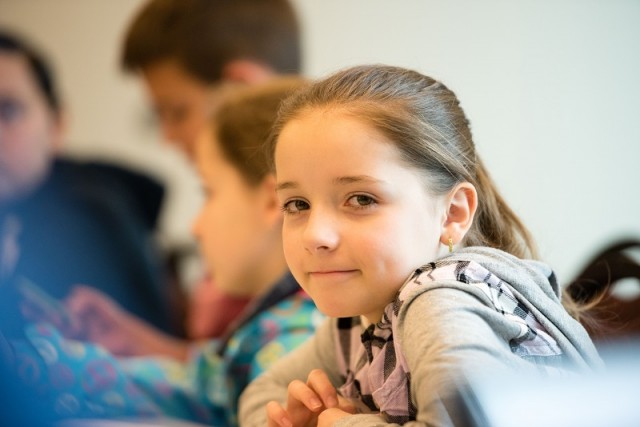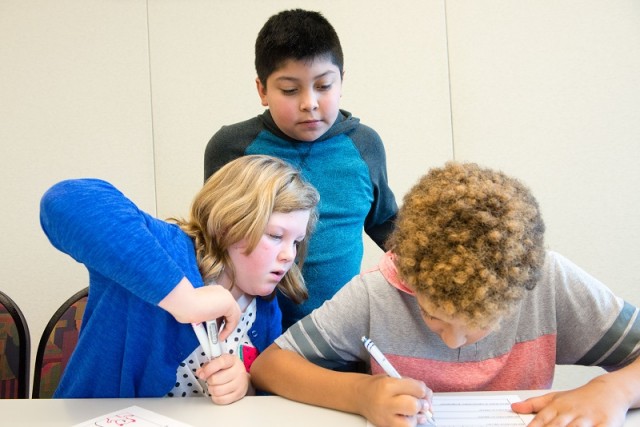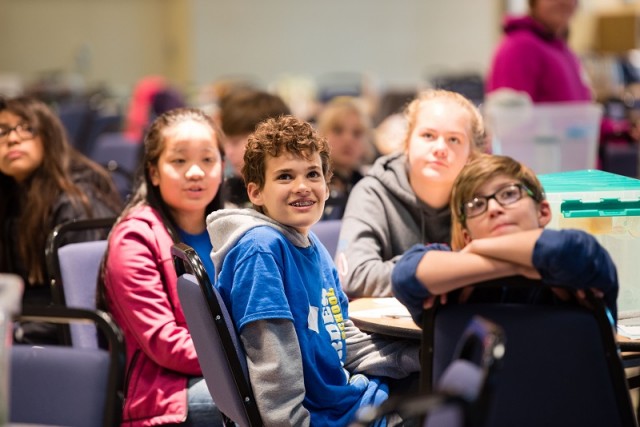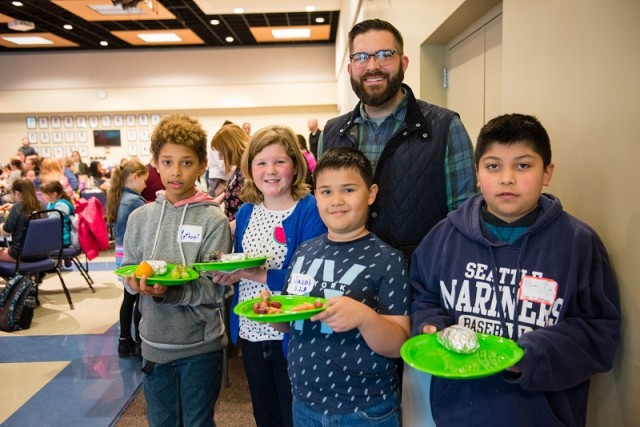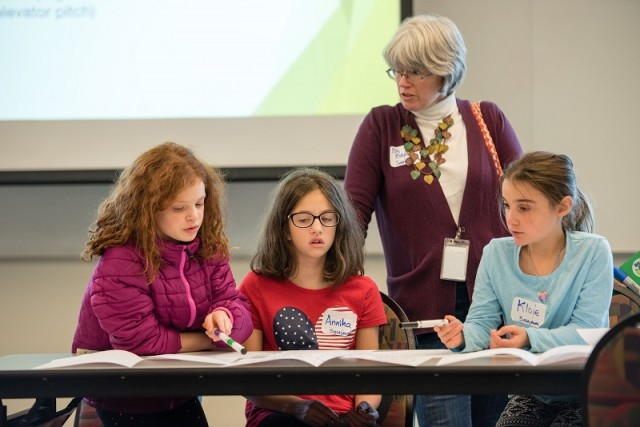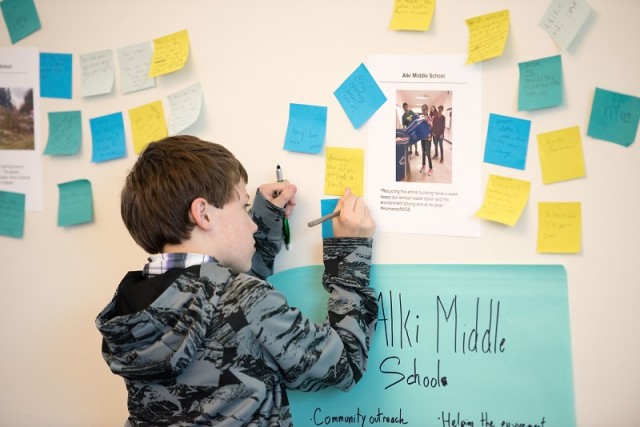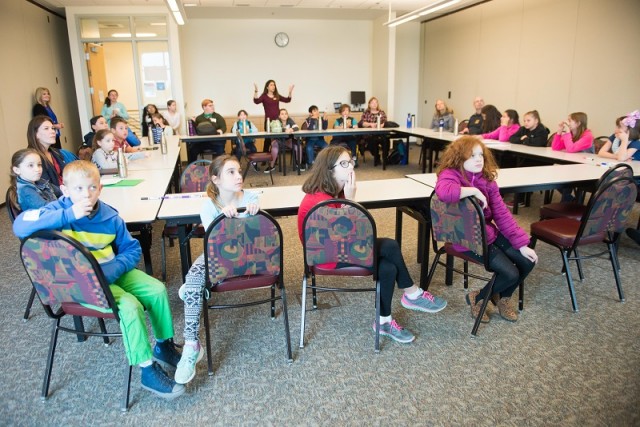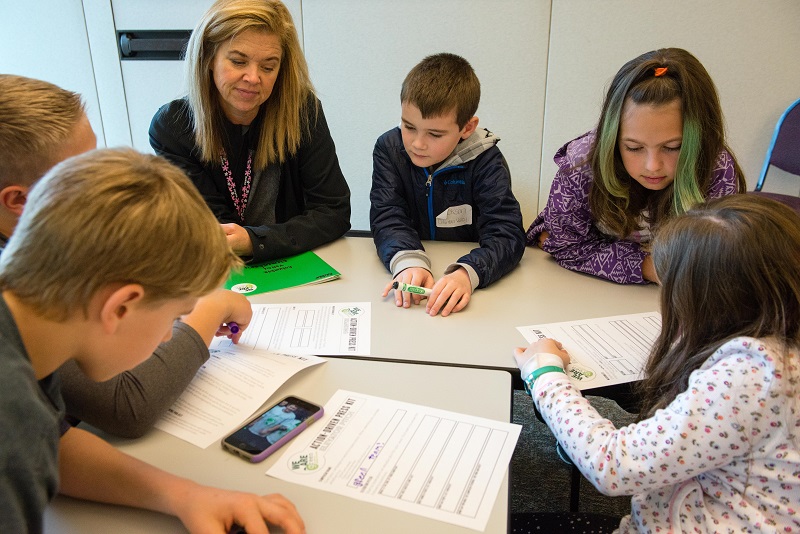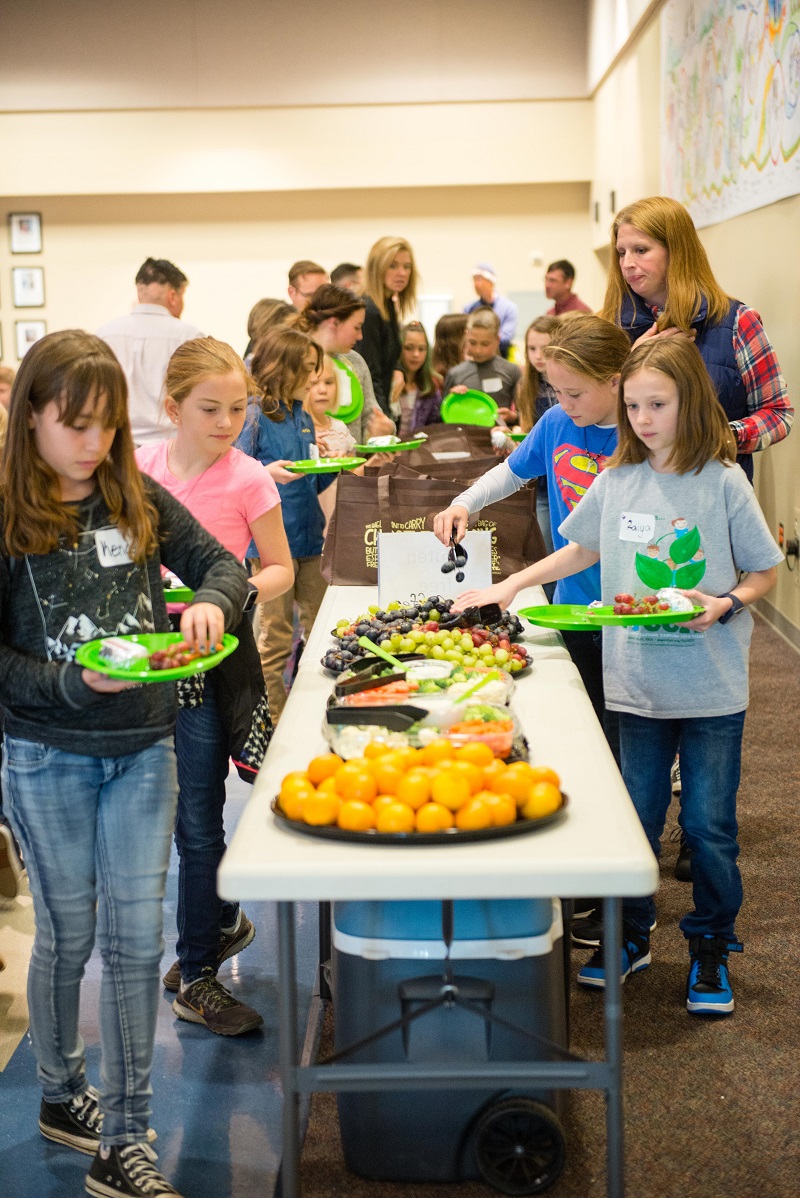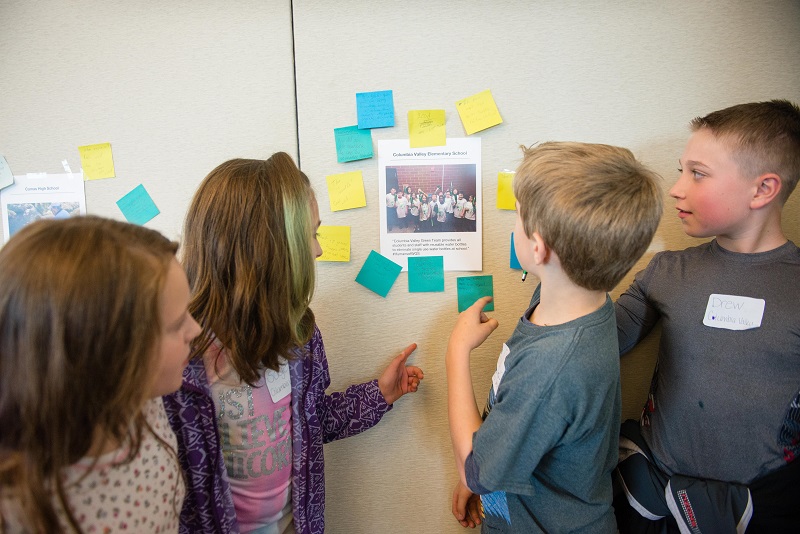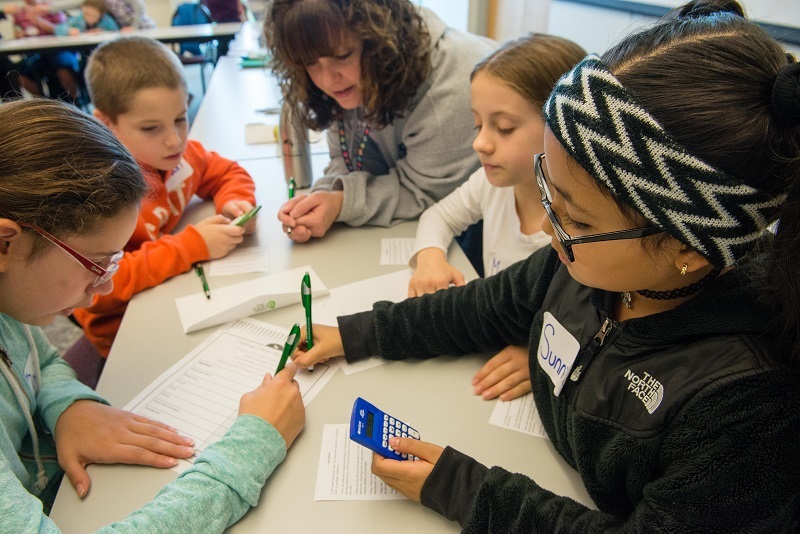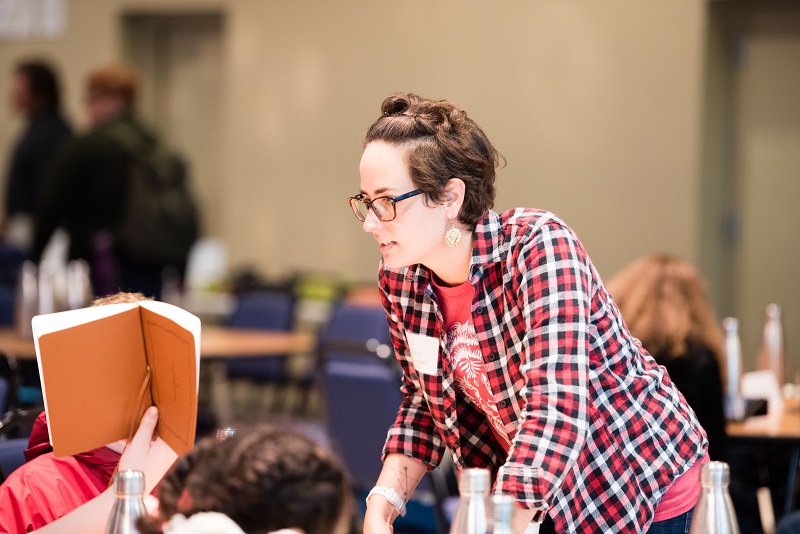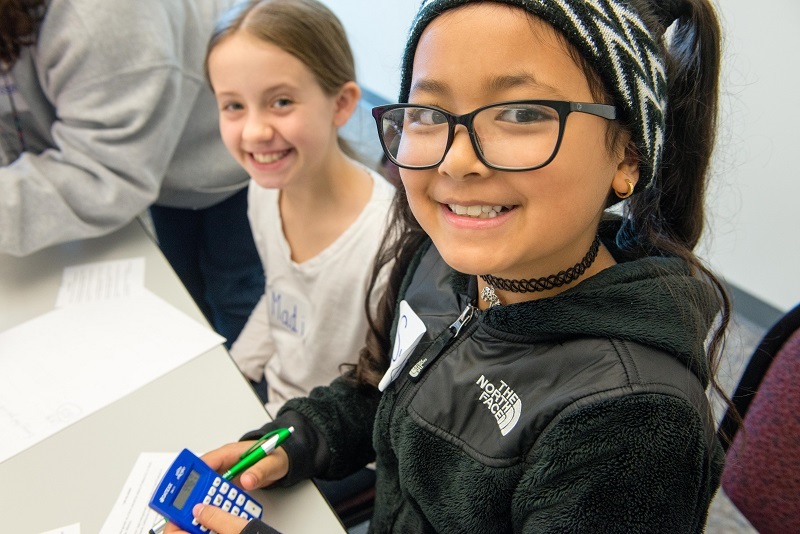Clark County Green News
Clark County Green Schools Student Summit
In early November, Clark County Green Schools and Washington Green Schools hosted the annual Student Summit at Clark College's Gaiser Hall. Twenty-five Green Teams from various public and private schools all over Clark County were in attendance, engaging in various ways they can sustain the projects they have already started, get inspiration for new ones, and continue their great work well into the future. After some opening comments from Meredith Lohr, executive director of Washington Green Schools, Green Teams were sent out to various sessions hosted by members of Washington Green Schools, Clark County Clean Water, Waste Connections, and Clark County Green Schools.
Beyond Waste
Ellen Ives, an Educator with Waste Connections, led a session on the effects of plastic and other kinds of waste in our watersheds. Discarded plastics and other refuse that is not handled properly is likely to move from land to streams and rivers and into our oceans. Aquatic animals often mistake plastic bits for food based on odor or appearance. For example, sea turtles will try to eat scraps of plastic bag, thinking it's a jellyfish. These plastic "meals" serve no nutritional value, and are a massive detriment to sea animal health. The session explored how plastics in the ocean have a vastly underestimated effect on the health of most oceanic habitats. Students were primed to engage with each other in small groups to discuss methods of plastic waste prevention in their schools.
"When we hear about the "giant island of garbage" floating in the Pacific Ocean, I think we imagine it as floating on the surface, the garbage can simply be scooped out of the ocean. This lesson taught the reality that the garbage, most of it plastic, pollutes all levels of the ocean and is often microscopic in size. We learned the feeding habits of the different ocean species living at each of those levels and how they're endangered by the plastic polluting their habitat."
Ellen Ives
Create Your Campaign
In this session, students learned how to use advertisements, logos and branding to create successful campaigns for their school's environmental action projects before brainstorming their own campaigns. Having a consistent, directed campaign message and platform helps keep the program on a steady course helping to spread the word more easily. Paring down the purpose of a campaign to a specific set of goals or outcomes helps direct the time and resources used more efficiently.
Lunchtime: A Chance for Learning
For lunch, Chipotle catered a selection of meat-free burritos. Fresh fruit, veggies and other healthy options were provided. Clark County Green Schools wanted to "walk the talk" to reduce the environmental impact even with catering a meal for a large group of people, which can prove to be challenging. Food was served on reusable plates to drastically reduce waste produced. Waste Connections generously provided a reusable water bottle to each student and Green Team leader in attendance, which eliminated the need for disposable cups. Burritos were cut in half so students could take only what they would eat and then return for seconds. Extra burritos were donated to a local homeless shelter and the food waste was composted. A lack of meat with the meal serves another important purpose: Raising animals for meat uses a lot of natural resources. Because of all the grain needed to feed cattle, a lot of water is consumed. It can take up to 2,000 gallons of water for one pound of beef! That's enough water to shower for about 6 months! (In comparison, a pound of wheat requires only 25 gallons of water). By making more resourceful meal choices, such as Meatless Monday, we can work to save tremendous amounts of water. Eating less meat and adding a variety of other non-meat foods to meals will add variety, essential nutritional value, and new flavors to cooking. Experiment and find a new favorite dish!
School Grounds: Land and Water
Eric Lambert Outreach Specialist (Top Right) and Jane Kleiner (Bottom center), Resource Program Coordinator with the Clark County's Clean Water Department facilitated two activity sessions at the Summit.In the first session, high school students examined aerial maps with an overlay of the campus storm system to assess surrounding land uses and likely storm water pollutants.Students then brainstormed ways to address these pollutants in the context of making a lasting change.Elementary students in the second session learned about various storm water pollutants with Enviroscape, a hands-on watershed model.
"After learning about often overlooked sources of water pollution, students had some great ideas for actions they could take to keep streams clean"
Eric Lambert
Share Your Story
Students and teachers intermingled to learn about other schools' environmental action projects and share their own stories, applying lessons learned to their own efforts. Members of Washington Green Schools and volunteers facilitated an open discussion between schools by having open comments about environmental action plans in Green Schools. Having the time to talk with other Green Teams provides an opportunity to compare and contrast what works and what doesn't. Green Teams also learned about the importance of using proper channels to advertise their projects as well as effective ways to reach out to the public through various mediums like YouTube, public appearances and the media.
Focus On Food
Green Teams calculated the food miles associated with local and non-local meals. They modeled food miles with different lengths of string on a map, considered the amount of fuel that goes into transporting food, discussed why this matters and what they can do to eat more sustainably. Understanding the difference between the resources used to eat apples grown in another state or country versus one grown on a local farm or your own backyard is an important step in reducing our environmental impact.
Teachers Circle
Teachers from various Green Teams met to swap stories with one another and network for future projects. Giving teachers the opportunity to share ideas and discuss what worked and what didn't, allows teachers to get a better idea of how they can make the best of what they have available to them at their school. Sharing stories also allows teachers to understand that they are not alone in the projects they do, and it gives them an extended support network to work with moving forward.
Closing Remarks
The 2017 Clark County Green Schools Student Summit was a great success. There was a large turnout of active schools who had plenty to share and even more to learn. We hope the Student Summit provided a chance to give Green Teams not just a "pat on the back", but an opportunity to really understand the importance of the work their schools do. Clark County's youth gained valuable skills like environmental stewardship, teamwork, project management, creative thinking and leadership development all life-long abilities that are highly treasured in private and public life. One of the most important things students learn that underlies all those other skills, is a strong sense of personal responsibility and care for themselves and the world around them. We hope to see schools continue in active participation with Green Schools, and that the work that these schools do will continue to inspire other schools to join Clark County Green Schools.
See You Next Year!
Author: Eric Stricker
Photos: Beth Conyers
When you subscribe to the blog, we will send you an e-mail when there are new updates on the site so you wouldn't miss them.

